Are you interested in keeping up with the latest innovative and transformative manufacturing solutions? Join the Cisco Connected Manufacturing Community! By becoming a member, you’ll receive access to industry news, complimentary webcasts, case studies, and white papers for optimizing business processes for manufacturing.
The power of mobility has transformed the IT landscape.
While mobility and other tech forces, such as cloud and big data, have enabled organizations to improve productivity and increase efficiency, the constant challenge of keeping data, assets and users secure continues to be a top concern for CIOs and CSOs.
And these concerns stretch across global borders. For example, Frost & Sullivan analysts predict a $1.1B investment towards IT security in Latin America by 2015.
Today, security is no longer an expense, but a necessity for moving forward. It’s an investment for the future longevity of any company. With this in mind, how can business and IT leaders keep their organizations safe in a mobile world? And what can we learn from the mobile security adoption we are seeing in Latin America?
Recently, I had a chance to participate in a new Future of Mobility podcast with Frost & Sullivan Research Analyst, Bruno Tasco, to discuss the answers to some of these questions and how organizational leaders can address security in a way to reap the benefits of true mobility. The podcast is available for download in Spanish and Portuguese and a summary in English can be found on iTunes.
Here are a couple of considerations for CIOs and CSOs as they evaluate their mobile security strategies and look to future-proof their business.
Prepare for Fast Changes
Talking about mobility or general mobility in our Latin America market is like talking about the past. According to the Cisco Visual Networking Index (VNI), Latin America is experiencing and will continue to see incredible mobile adoption. Continue reading “Latin America Insights: Keeping Your Organization Safe in a Mobile World”
If you haven’t read Cisco’s Tae Yoo’s recent post on the Huffington Post ImpactX site, you should. It’s a great look at the power of the Internet of Everything (IoE) to help mankind. Yes, humankind. It’s a powerful statement, but I think it’s true.
With the example of disaster and relief efforts, the post highlights how technology continues to be more accessible every day. When seconds count, such as in the 2010 Haiti earthquake and Superstorm Sandy in 2012, technology is already impacting lives and will continue to get event better.
“Our world and our connections are growing and accelerating at a pace never experienced before. In 1984, there were only 1,000 Internet devices. By 2020, the number is predicted to reach 50 billion. This astounding growth and velocity also brings with it some astounding opportunities that we can use to benefit humanity.” – Tae Yoo, Senior Vice President, Corporate Affairs, Cisco
Read the full post, and let us know how you see IoE impacting humankind.
In my last blog I discussed setting the stage in preparation for the Wi-Fi network for Mobile World Congress 2014 which supported more than 80k devices over a span of 4 days. Today I’ll talk about one of the many site surveys we conducted at the Fira Gran Via to ensure the success of our high density network. Full details in the white paper here.
High Density Wi-Fi deployments and site surveys go hand in hand. Pre-installation and post-installation site surveys account for the most effective way to identify the contours of your RF coverage and eliminate potential multipath distortions, hidden nodes, and other coverage issues. Special attention was given to the large keynote auditorium halls in order to keep a check on the additional RF coverage needs to accommodate the high density of users packed in a very close range.


The Hall-4 auditorium was one example of such a high density area with the 2000 person capacity area had a peak connection of 1924 concurrently connected Wi-Fi devices distributed across 16 Cisco APs while the Facebook keynote was in progress, with a max load of 530 Mbps of internet traffic. To avoid an RF overlap, the ceiling mounted APs above the auditoriums were converted to monitor mode. Using the final pre-keynote site survey data, the RF profile for the Hall-4 auditorium was tweaked, and RRM automatically optimized the coverage to the desired degree by adjusting the Tx power levels. Continue reading “Behind the WiFi Network @ Mobile World Congress 2014: Site Surveys”
How Internet of Things Is Transforming Public Safety
Use Case 1: BYOD for Police Officers
The Internet of Things refers to connecting currently unconnected people and things, and it’s transforming public safety. This blog explains how police officers can securely use commercial smartphones and tablets in the field. Future blogs will describe other ways to use the Internet of Things to improve communications, collaboration, and operations.
Police officers are clamoring to use their iPhones, iPads, and Android devices for work. For law-enforcement agencies, allowing bring-your-own-device (BYOD) is appealing because it can save money, and mobile apps for law enforcement improve situational awareness.
Until now, two things have stopped police departments from allowing BYOD. One is governance. To use smartphones and tablets for incident response, departments need a way to enforce standard operating procedures. Lacking this, the NYPD recently had to remind officers to use radios instead of smartphones for official communications. Here’s the article in the New York Post.
Continue reading “How Internet of Things Is Transforming Public Safety”
Superior Platforms, Scale, and Operational Simplicity
Data Center trends like Virtualization, Solid State Drives, DC consolidation and Data Explosion are putting a tremendous amount of strain on the infrastructure. These challenges need targeted and multifaceted approach. It has to be holistic solution to the problems rather than point products for each unique problem. Data Centers require improvements in performance, flexibility, scalability, and reliability and ease of management. To address that Cisco revamped the MDS product line, the journey we started last year when we introduced 9710 and 9250i.
9710 – Director Class Switch with 3x the performance of any director, 384 ports of line rate 16G FC, highest reliability and flexibility.
9250i – Services Appliance supporting 10G FCIP, 16G FC and 10G FCoE in addition to IO Acceleration, Data Mobility Migration in compact 2 RU form factor.
We had a great success with the product line with steepest ramp and amazing customer feedback. Building on the success we have added new members to the product family and extended the innovation to allow for simpler management and scalable deployments.

a) Three New Products
- MDS 9148S – Industries’ most versatile affordable 1RU switch with High-Performance, Easy of Deployment, Enterprise-class features
- MDS 9706 – Unprecedented investment protection with high performance, reliability and multi-protocol flexibility
- High Density line rate 10G FCoE Card – For customers to adopt high density FCoE in incremental non-disruptive fashion on the existing FC footprint without forklift upgrades.
b) New Scalable Deployment Options
- Much Higher Scalability for SAN Infrastructures.
- Dynamic FCoE over Fabric Path
- Data migration enhancements for speed, scale and resiliency
c) New Management Features
- Hardware based FC Congestion Detection and Recovery
- Integration with Industry leading Platforms
- End to End Visibility
- Switch Health Score
With the addition of new members Cisco not only has best of the breed products but also broadest product portfolio. This allows customers to design the SAN precisely to their needs from small departmental SANs to the largest enterprises, from traditional LAN, SAN networks to fully converged fabric and everything in between.

Attend the Webinar on August 12th 8:00 PST to learn more : Register Now
Lets look at the capabilities of each product in little more detail
Cisco MDS 9148S: High-Performance, Easy to Deploy, Enterprise-class Fabric Switch

Versatile: 9148S pay as you grow model allows customers to start from small base and grow . It allows customers to grow from 12 Ports to 24, 36 and finally 48 without any rip and replace. It allows customers to go from 2/4/8G to 16G FC speeds. It is not only the most affordable switch shipping today across all the possible configurations but with 2x the range of ports it allows unparalleled scalability for future growth.
Ease of use: Power On Auto provisioning which allows 9148 and 9148S to automate switch setup. From getting DHCP, to downloading and applying the software to the final configuration is done automatically. Quick configuration wizard allows the box to be configured in an easy way. It shares the same NxOS as rest of the MDS and Nexus products. Power on Auto Provisioning (POAP) is important for large scale data centers where 9148S will be used as Top of the Rack (ToR) switch and distributed throughout the data center. This saves customer to go from box to box with the serial cable and program them individually. It allows for rapid, error free and consistent provisioning.


Enterprise Class switch: It offers the rich Enterprise features like non-disruptive software upgrade,32 Virtual SANs (VSANs), Inter-VSAN Routing (IVR), QOS, PortChannels, N-Port ID Virtualization (NPIV), N-Port Virtualization (NPV), Comprehensive Security in addition to redundant power supplies and fans. Its first of the kind switch in the industry to allow hardware based slow drain detection and recovery. It has back to front airflow.
Customer Use Case: Customer will use the 9148S to design small SAN environments like departmental SANs. Larger Enterprises will use 9148S as ToR Switch for ease of cabling and ease of Management. In addition to that 9148S will be used for BC/DR or remote locations. Pay as you go model is very attractive to customers as it allows them to grow the port count from 12 to 48 without any price penalty as their network demands grow.
Cisco MDS 9706: Extending MDS 9710 Director Qualities to a Smaller Form Factor

It is the highest performance director in the industry. It provides 3X the bandwidth compared to any compact director in the industry. Not only it provide 192 ports line rate performance at 16G but it is designed to provide line rate performance at 32G FC and 40G FCoE when those line cards are introduced without the forklift upgrades using the same type of fabric cards. With 6 fabric cards it provides 1.5Tbps of bandwidth per slot.
In addition to that this is industries first class of directors to offer Redundancy on all critical components including fabric cards. Smaller failure domain, Forward error correction, multi-point CRC checks, predictable and consistent performance for both latency and throughput.
Small to medium enterprises will use 9706 as Middle of the row and end of row switch in addition line rate 16G performance allows it to be used for connectivity to targets in addition to host connectivity. It will be used for both edge core and edge-core-edge designs.
In addition to the pod like deployments where 9RU form factor and 192 ports of line rate at 16G is very attractive.
Some of the specs of the switch are enumerated below
- 1.5 Tbps per slot switching capability
192 ports of 16G FC line rate today with 100% head room to grow to 32G FC) without forklift upgrade
- Industries Highest Reliability

N+1 Fabric redundancy, smaller failure domains, Forward Error Correction, CRC error checks at multiple points, In service software upgrades, Crossbar design with central arbitration and Virtual Output Queuing ensure customers not only get highest availability but also predictable and consistent throughput independent of the traffic profile.
- Unmatched Flexibility
With ability to support both FC and FCoE line cards. With capability to support 2/4/8/10/16G FC and 10G FCoE today and performance to support 32G FC and 40G FCoE on the same footprint.
Industry’s Highest-Density FCoE Module on a FC Director
With 48 ports this has the highest port density and greatest flexibility in the industry. Without any restrictions Cisco customers can now orchestrate FC, FCoE and mixed solutions. FCoE line card afford customers ability to design FC solutions and incrementally deploy FCoE without forklift upgrades and meeting the same features, reliability and availability as afforded by FC.

In addition to hardware we added extensive capabilities to enable small size to cloud scale deployments.
Scalability Enhancements
To support large scale out and scale up deployment models we have increased the scalability limits for the SAN infrastructure. The industry leading scalability numbers allow Cisco customer’s unprecedented future proofing and scalability to Scale out or Scale-up. Finally the Data Mobility Migration has 2x the speed and 8x the scale and higher resiliency.
Simplifying SAN Management
In addition to enhanced capabilities in Cisco tools MDS family is integrated with industry standard tools to provide faster configurations like automated zoning. Some of the examples of the tools are UCS Director, EMC ViPR, Microsoft System Center VMM and IBM PpowerVC.
To address complexity in the data-centers Cisco is focused on SAN Management simplification. First and foremost that is top of mind for customers is slow drain. If there are slow draining devices in the network it chokes the entire fabric. These conditions are transient, extremely difficult to isolate, debug and fix. To detect and recover for these conditions Cisco introduced Slow Drain Detection and Recovery in software in previous generation of devices. Now with the new products we have provided the support for these devices to run the slow drain detection and recovery in the hardware rather than waiting for software to come around polling individual ports every 100 ms which is a life time in the data center. As the table below shows with hardware based slow drain the detection speed has increased 100 times and recovery is of the order of nano seconds rather than 100ms.
| Platforms | Detection Granularity | Recovery Action Latency – Start and Stop | |
| Software-based | MDS 9500MDS 9148 | 100ms | 100ms |
| Hardware-based NEW! | MDS 9700, MDS 9250i, MDS 9148S | 1ms | Immediate (ns) |
For more info read this whitepaper
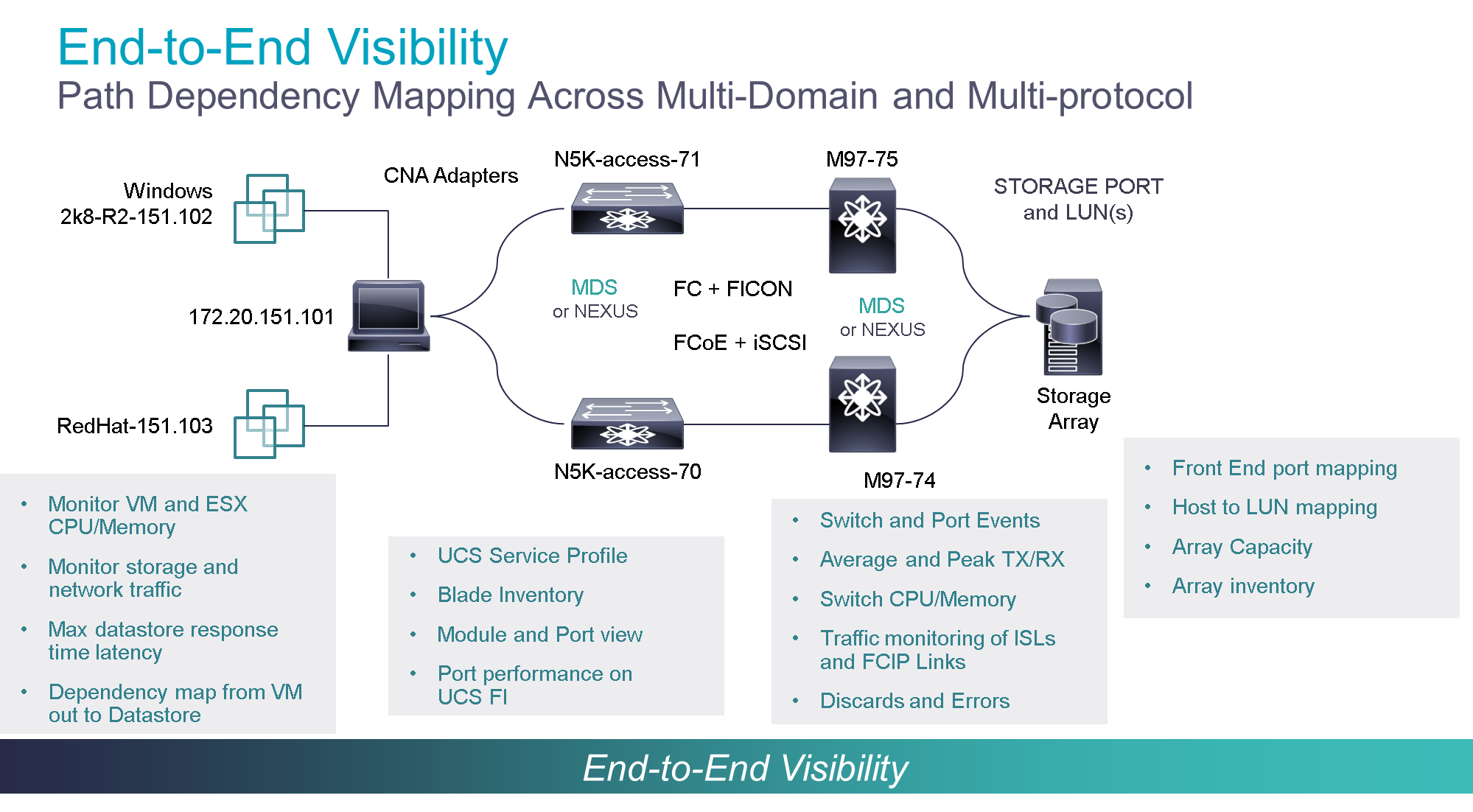
In addition to that Data Center Network Manager (DCNM) provides end to end visibility from hosts (virtual or Physical) through switches (MDS or Nexus) into the storage arrays independent of the protocol. DCNM is single pane of glass visibility into the Data Center for both SAN and LAN.
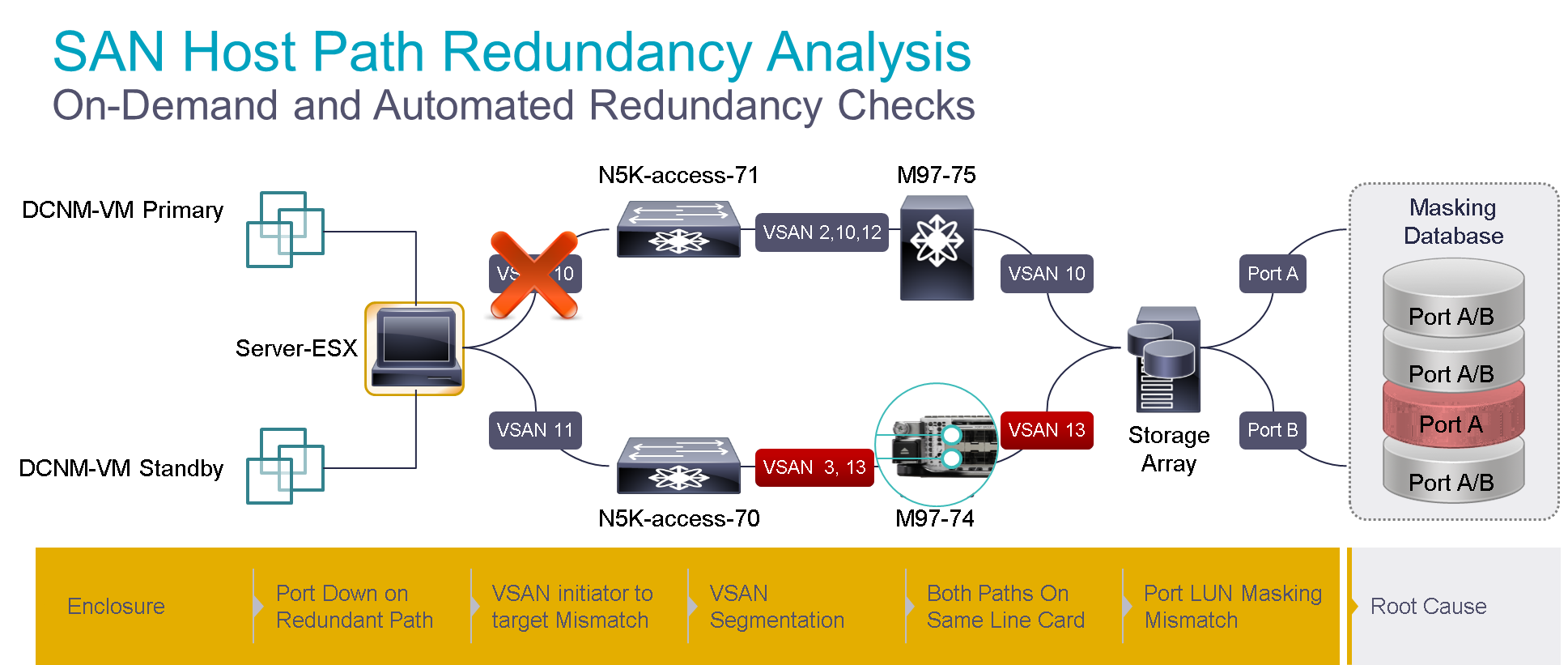
Host Path Redundancy Analysis checks the network every 24 hours or customer designated interval if there is end to end dual paths from Host to the target. It checks against port down situations, VSAN mismatches, VSAN Segmentation, LUN mismatches as well as makes sure both the ports are not on the same line cards. Similar activity that used to take months is now completed on the fly every 24 hours reducing risk and time to repair. Further more administrators are not surprised by an outage as they have complete visibility for the dual paths. Furthermore having both the paths up allows to mitigate any silent failures as well as avoid outages if one of the SAN fails.
Switch health score is another unique capability of DCNM to track switch health over time. It allows customer to quickly determine level of risk, isolate and fix the alerts resulting in low health score and track the health of the SAN over time.
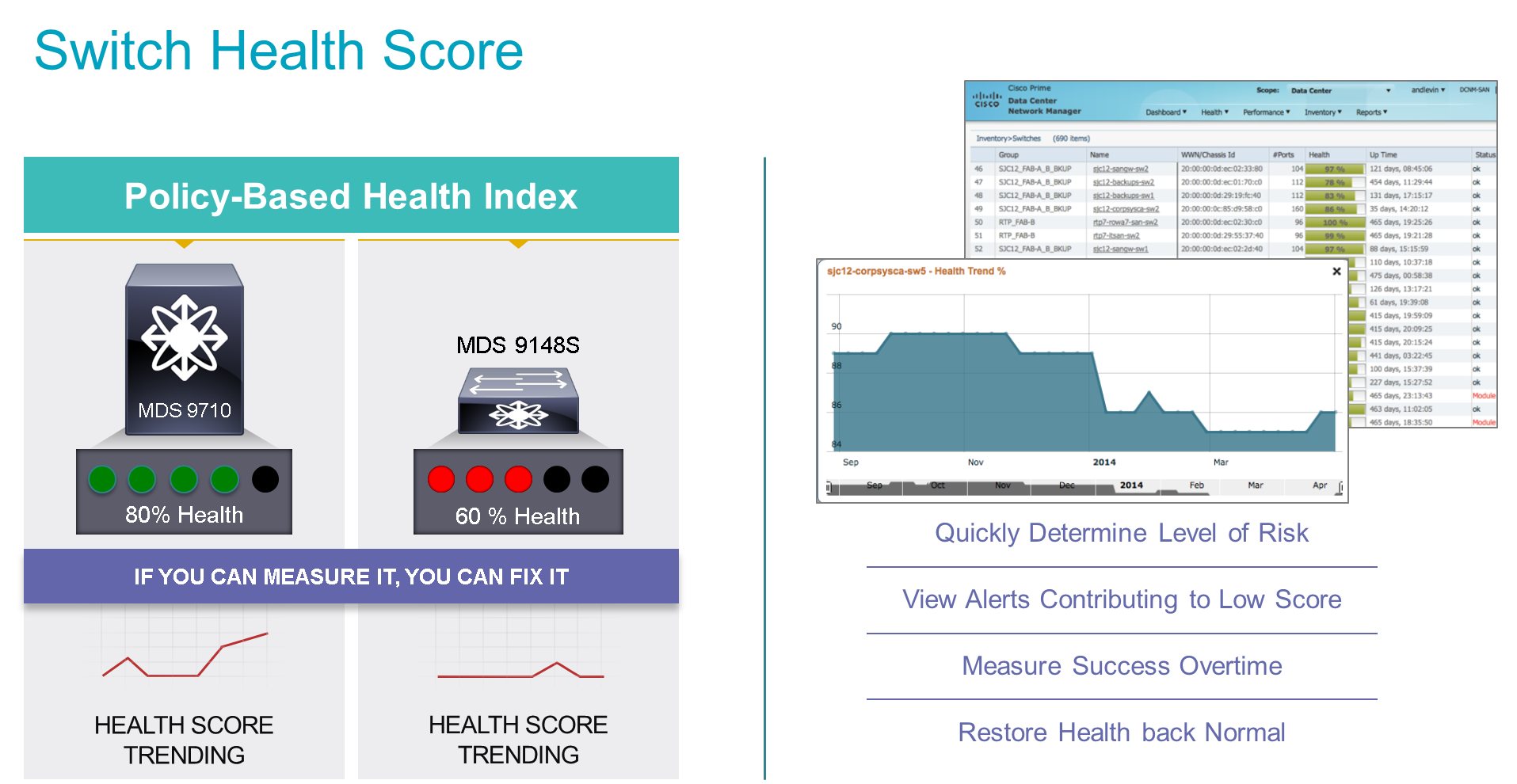
As I started the discussion today Data Centers need a holistic approach to solving the challenges of the data center. Customers not only need higher performance, investment protection, lower opex and capex, reliability but also ease of management and tightly integrated end to end solution. The solutions and capabilities I described allows us to solve the challenges faced by data centers not only today for the years to come. We introduced MDS products in 2002 and since then we have introduced industries first innovation, just few examples out of that are enumerated below. We will continue to innovate in this space for the next decade.
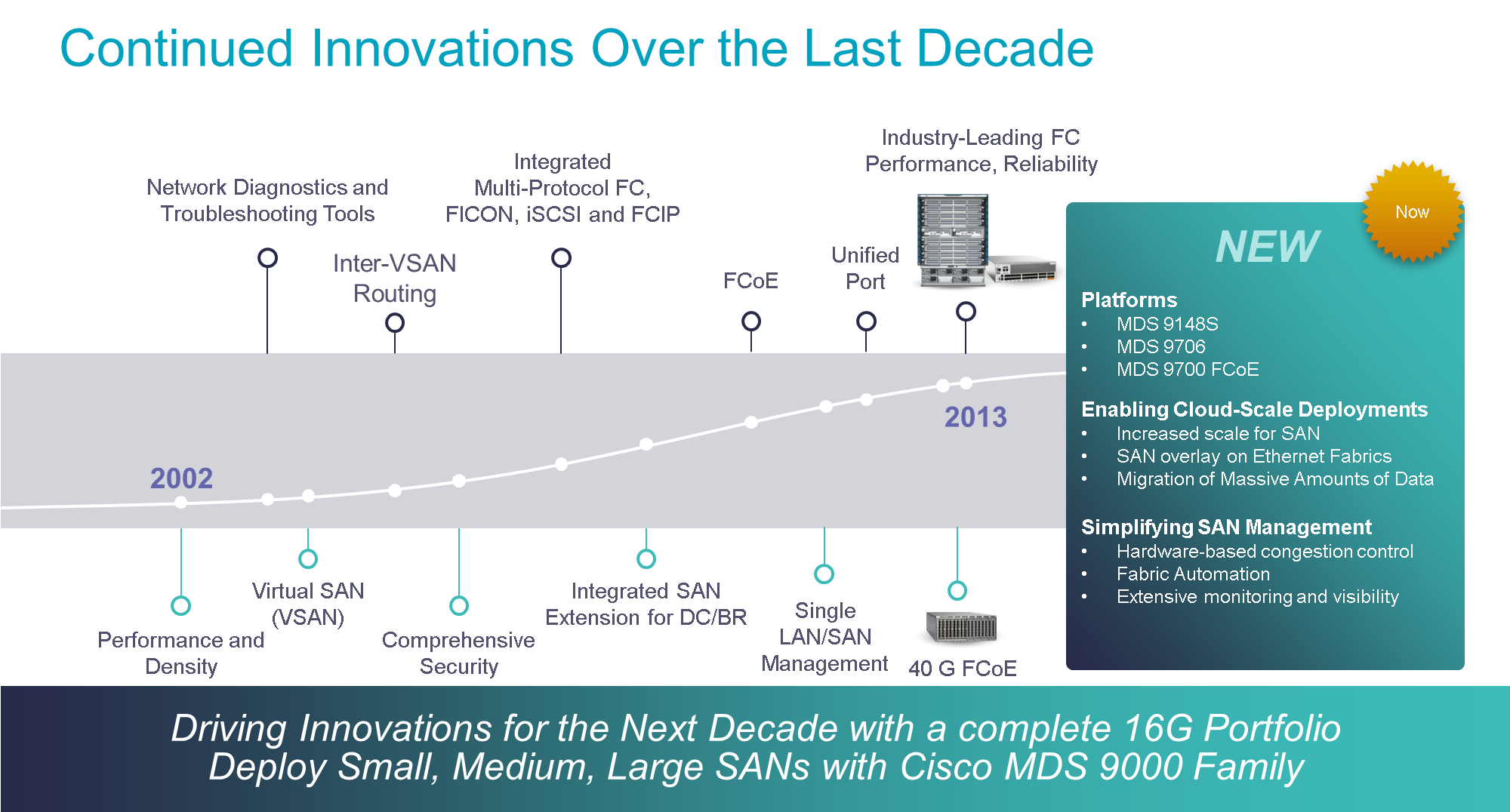
Prashant Jain
Sr. Product Manager, DCBU
“The best time to plant a tree was 20 years ago. The second best time is now”
You are probably thinking I have the most exciting job in Silicon Valley. In June 2014, I was leading Cisco ACI at the EMEA (Copenhagen) edition of F5 Agility. Next week, amidst a glorious New York autumn, I will be at the glittering Times Square for the Americas edition of F5 Agility. And you’re quite right, I do have an exciting job bringing together the best of Cisco ACI and F5 technologies that helps customers accelerate applications deployment with greater agility and automation – and also having some fun in the process.
If like me, you are fortunate enough to be attending, I am sure you are looking forward to F5 CEO John McAdam’s keynote. The opening session will also have F5 Manny Rivelo, EVP of Strategic Solutions, invite Cisco Exec Soni Jiandani on the stage as a special guest, and other fun events.
At F5 Agility 2014 New York this month, Applications take the central stage and how F5 is setting the course for the future of application solutions. The key focus area is how to deliver fast, secure and highly available Applications.

Another key focus area is around the deployment of applications and how joint technology solutions present a tremendously powerful option for F5’s customers. F5’s partners – and Cisco is a key partner – are a large part of Agility. Cisco is at the event to demonstrate how its ACI technology integrates with F5 BIG-IP to improve manageability, strengthen security, and ensure faster and more successful deployments.
We have quite a few exciting things that we are showcasing at F5 Agility New York from a Cisco ACI perspective, and in this blog I want to take you on a quick tour of the highlights. As a testimony to our growing momentum with the Cisco ACI-F5 joint solution effort, we have a Panel session featuring Cisco and F5 execs, demos, business and technical breakout sessions. The event commences with F5 CEO John McAdam’s keynote on Tuesday August 5, where he will … discuss how the top trends of social, mobile, cloud, and security are affecting application delivery, and how F5 Synthesis is helping speed the shift towards an application-centric world.

Now shifting gears to Cisco led activities – Cisco Senior Director of Marketing Shashi Kiran is presenting a business breakout session titled “Cisco and F5: Building Application Centric, Service enabled Data Centers” on Wednesday August 6 at the Astor Ballroom. This session gives a detailed overview on the benefits of Cisco ACI-F5 software defined application services joint solution and the customer pain points it addresses, so do not miss this.
Attendees are in for a treat Tuesday August 5, as Cisco Exec Soni Jiandani and F5 Exec Manny Rivelo present a 20 minute Q&A session at the Broadway Ballroom. Please mark your Calendar to come and see Soni sharing her insights on importance of Cisco ACI in the context of SDN, Cloud use-cases in the context of Cisco ACI, standardization and enablement of Orchestration and provisioning plus many more.

We also have an exciting demo at the Cisco ACI kiosk, where we are showing the Cisco ACI and F5 BIG-IP joint solution with step-by-step illustrations of configuration, deployment and execution. The demos run Tuesdays and Wednesday at the Exhibit Hall for the entire duration of the day. Stop by our demo kiosk to get a deep-dive architecture type white-boarding or brainstorming type engagement from Cisco subject matter experts on ACI-F5 integrated solution. There are several other solution areas where Cisco and F5 are working together including F5 LTM-Cisco Nexus 7000 integration, F5 LTM-SourceFire NGIPS integration etc, so come by our demo booth to learn more.
There are several F5 led Sales and technical sessions and Labs Monday – Wednesday, showcasing the Cisco ACI-F5 joint solution. So gather with your peers, experts in the industry, and F5 technical gurus, and understand how F5 Synthesis™ and its reference architectures can address your customer’s needs today—and years from now.
To learn more on Cisco and F5 partnership visit the Cisco-F5 Alliance web page.
Log on to most social media platforms and you’ll likely see a bunch of # signs floating around. No, they do not designate a phone number; instead, they’re an easy and useful way to grow your products and brand in a way that consumers are familiar with. Not sure what they mean or how they work? Stick with me. I’ll explain what hashtags are, why they’re useful and how to use them in your marketing practice.
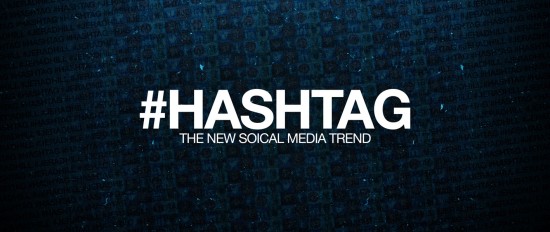
What are hashtags?
According to Twitter, “The # symbol, called a hashtag, is used to mark keywords or topics in a Tweet. It was created organically by Twitter users as a way to categorize messages.”
Now, they’ve expanded beyond Twitter to many other social sharing sites—namely Instagram, Facebook and Pinterest—as a way to group like items into one. You simply put a # with a single word or phrase (make sure not to use punctuation or spaces) in your post, and it automatically turns into a clickable link.
It’s common to use hashtags for a big event, promotion, or product launch. For example, say you’re going to one of Cisco’s largest events, Cisco Live! You document your days by sharing your pictures on Instagram and stay updated with regular tweets, but add in the #CiscoLive hashtag and boom – you’re suddenly synced up with others who are also talking about Cisco Live! You instantly have a connection to others in the industry, thanks to this little symbol.
Why do hashtags matter?
- Networking. Using hashtags allows you to reach a new audience you might not have interacted with.
- Advertising. If people start hashtagging their photos or tweets with something related to your company or a campaign you’re running, their followers will also see this, possibly driving them to your site and, fingers crossed, becoming a new partner or customer.
- Building relationships. Click on a hashtag related to your product or industry and you’ll see not only what customers are interested in, but also what they’re saying. You can then start a conversation with these folks, leading to an introduction about your company or a solution to a problem they might be having.
- Relevance. By clicking on a hashtag, you’ll find tons of other tweets, images, and posts that are related. Try it: head to Twitter, search #CloudComputing and you’ll see hundreds of comments, articles, and photos related to the subject. It’s worthwhile to take some time to search for hashtags relevant to your company and industry to see what other products or information comes up.
There are a number of benefits to start adding that # sign to your posts. Does your company use them? Have you tried using hashtags in a marketing campaign? Share your thoughts in the comments below.
We recently attended PegaWorld in National Harbor, Maryland, on June 8-10. The conference focused on how businesses today must adapt to technological innovation and utilize new solutions that deliver business agility and empower organizations so they can rapidly close execution gaps and seize new opportunities. Pega’s investment in a customer-centric strategy enables digital transformation, which is essential for an Omnichannel execution strategy that demands a new approach to software.
Pega 7 is a best in class Business Rules Engine (BRE) platform led by Chess Master and Founder Alan Trefler. These new BRE capabilities enables Omni-Channel UX™, Next-Best-Action and Business Process Fulfillment, empower financial services firms to transform the way they engage with their customers, simplify their operations and adapt to market changes. Continue reading “Omnichannel Insurance Makes its Debut at PegaWorld”
CONNECT WITH US